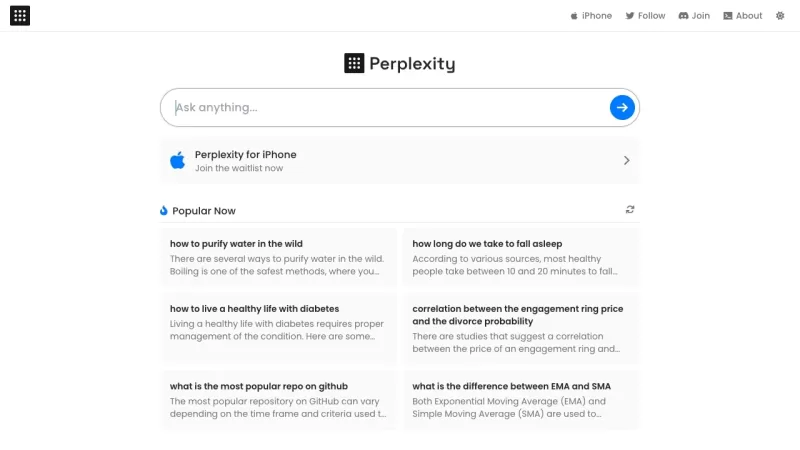Finding Strength in Uncertainty: Embracing Impermanence

 May 1, 2025
May 1, 2025

 StevenWilson
StevenWilson

 4
4
In today's ever-changing world, the ability to adapt and flourish amidst uncertainty is more vital than ever. The concept of impermanence, a fundamental principle in many philosophical and spiritual teachings, provides a profound lens through which we can understand and navigate life's constant flux. By acknowledging the transient nature of everything around us, we can build resilience, ease anxiety, and discover a deeper sense of peace and fulfillment. This article explores the essence of impermanence, its far-reaching implications, and offers practical ways to incorporate this understanding into everyday life.
Key Points
- Impermanence is a universal truth: Everything is in a state of constant change, whether we recognize it or not.
- Resisting change leads to suffering: Fighting against the inevitable flow of life results in stress and anxiety.
- Accepting impermanence builds resilience: Embracing change helps us become more adaptable and stronger.
- Mindfulness reveals impermanence: Being present in the moment shows us the ongoing nature of change.
- Detachment eases emotional pain: Understanding that nothing lasts forever helps us release attachments.
- Impermanence enhances appreciation: Recognizing the fleeting nature of moments increases our joy.
- Practical steps can help us embrace impermanence: Simple exercises can assist us in integrating this concept into daily life.
Understanding the Concept of Impermanence
The Nature of Change
Impermanence is the philosophical idea that everything is temporary, constantly changing, and ultimately subject to decay. This notion is central to Buddhist philosophy, where it is referred to as anicca. However, the idea of impermanence resonates across various philosophical and spiritual traditions. At its heart, impermanence teaches us that nothing remains static, not even for a moment. From the tiniest subatomic particle to the vastness of galaxies, everything is in a state of perpetual change.

This understanding has deep implications for our lives. Our bodies age, relationships evolve, emotions shift, and circumstances change. Resisting these natural shifts is like fighting against reality itself, which inevitably leads to suffering. By recognizing and accepting the impermanent nature of existence, we can cultivate greater flexibility, peace, and wisdom. The more we embrace this truth, the better equipped we are to handle life's inevitable ups and downs.
Ignoring impermanence can cause distress because nothing remains the same, and we can't hold onto anything forever. By understanding impermanence, we can better appreciate the present, feel more gratitude for what we have, and be ready to let go when necessary. This doesn't mean we shouldn't value or care for what we have; it means we shouldn't become overly attached, knowing that change is inevitable.
The Psychological Impact of Resisting Change
Humans naturally crave stability and predictability. We create routines, form attachments, and set expectations about how things should be. When these expectations aren't met, we often experience distress. Resisting change can take many forms:
- Anxiety: Worrying about future uncertainties and potential losses.
- Depression: Feeling overwhelmed by past changes and perceived failures.
- Anger: Reacting defensively when our expectations are challenged.
- Fear: Avoiding new experiences due to a fear of the unknown.
This resistance stems from a desire to control the uncontrollable. We cling to familiar patterns and relationships, hoping they'll provide security. However, this clinging only intensifies our suffering when change occurs. For instance, imagine someone who loses their job and spends all their energy trying to get the same position back, rather than exploring new opportunities. Their resistance to change leads to prolonged stress and unhappiness. Accepting the job loss as a new beginning can open doors to different jobs or even starting their own business.
Benefits of Embracing Impermanence
Instead of resisting change, we can choose to embrace it. Embracing impermanence isn't about passively accepting whatever comes our way; it's about actively engaging with the present moment, recognizing that everything is transient, and adapting accordingly.
The benefits of embracing impermanence are transformative:
- Increased Resilience: Accepting change helps us bounce back more quickly from setbacks.
- Reduced Anxiety: Recognizing that nothing lasts forever helps us let go of future worries.
- Greater Appreciation: Understanding the fleeting nature of moments enhances our joy.
- Improved Relationships: Letting go of expectations allows us to cherish our connections more fully.
- Enhanced Creativity: Embracing new experiences can unlock our creative potential.
- Deeper Sense of Meaning: Connecting with life's flow can give us a profound sense of purpose.
When we embrace impermanence, we're not just accepting change; we're actively participating in it, shaping our lives with purpose and direction.
Aspect Resisting Impermanence Embracing Impermanence Mindset Fearful, controlling, clinging Open, accepting, flowing Emotional State Anxious, depressed, angry Peaceful, resilient, appreciative Behavior Avoiding change, rigidly clinging to old Adapting to change, exploring new options Relationships Strained by unmet expectations Strengthened by acceptance and understanding Overall Wellbeing Reduced happiness and fulfillment Increased happiness and fulfillment
Practical Strategies for Embracing Impermanence
Mindfulness Meditation
Mindfulness meditation is a powerful tool for observing the constant flow of change within ourselves and the world around us. By focusing on our breath, sensations, or thoughts without judgment, we can cultivate a greater awareness of the present moment and the impermanent nature of all experiences.

How to practice:
- Find a quiet space: Sit comfortably with your back straight, either on a chair or on the floor.
- Close your eyes: Gently close your eyes and bring your attention to your breath.
- Observe your breath: Notice the sensation of the air entering and leaving your body. Don't try to control your breath; simply observe it.
- Acknowledge distractions: As your mind wanders (and it will), gently acknowledge the thoughts or sensations without judgment, and redirect your attention back to your breath.
- Continue for 10-15 minutes: Practice this meditation daily, gradually increasing the duration as you become more comfortable.
Regular mindfulness practice helps us recognize the impermanent nature of thoughts, emotions, and physical sensations, enabling us to detach from them and respond with greater equanimity.
Practicing Detachment
Attachment to things, people, and ideas is a common source of suffering. Detachment, however, isn't about suppressing love or avoiding relationships; it's about recognizing that nothing lasts forever and freeing ourselves from the grip of expectations and control.
How to practice:
- Identify your attachments: Reflect on the things you feel most attached to – possessions, relationships, beliefs, or outcomes.
- Challenge your need for control: Ask yourself why you feel the need to control these things and what fears drive your attachment.
- Practice letting go: Gradually release your grip by accepting that these things are subject to change and that your happiness doesn't depend on them.
- Cultivate gratitude: Instead of clinging to what you have, focus on appreciating it in the present moment.
Detachment allows us to enjoy things without becoming overly dependent on them, leading to greater freedom and peace of mind. This is one of the key ways to improve mental awareness.
Reflecting on Mortality
While the thought of death can be unsettling, reflecting on our mortality can be a powerful reminder of life's preciousness and the urgency to live fully. By acknowledging that our time is limited, we can prioritize what truly matters and make the most of each day.

How to practice:
- Consider your values: Reflect on what's most important to you – your relationships, your passions, your purpose.
- Imagine your last day: Visualize what you would want to do, say, and experience if you knew it was your last day on Earth.
- Live with intention: Make conscious choices that align with your values and prioritize activities that bring you joy and fulfillment.
- Let go of regrets: Forgive yourself for past mistakes and focus on living a life that minimizes future regrets.
Reflecting on mortality can motivate us to pursue our dreams, cherish our relationships, and live with greater authenticity. This isn't about dwelling on morbid thoughts; it's about using the awareness of death to enhance the quality of our lives.
Accepting Transient Emotions
Like everything else, emotions are impermanent. They arise, linger for a while, and then fade away. Learning to observe our emotions without judgment can help us avoid getting swept away by them.
How to practice:
- Notice your emotions: Pay attention to the physical sensations, thoughts, and impulses associated with your emotions.
- Label your emotions: Identify and name the emotion you're experiencing, such as anger, sadness, or joy.
- Observe without judgment: Acknowledge that emotions are temporary states and resist the urge to judge them as good or bad.
- Let go of the need to control: Allow your emotions to flow freely without trying to suppress or amplify them.
By practicing this, we can avoid getting caught in a cycle of emotional reactivity and respond to situations with greater clarity and compassion. Greater clarity helps us focus and become better decision-makers.
Engaging in Acts of Service
Service is a powerful way to connect with the broader human experience. Acts of service redirect our attention from our impermanent concerns to something bigger than ourselves. It reminds us of the interconnectedness of all beings and provides a sense of purpose that transcends the transient nature of our individual lives.
How to practice:
- Identify causes you care about: Think about the areas of the world that you would like to help improve.
- Volunteer your time: You can contribute at a local shelter, visit the elderly, or participate in environmental cleanups.
- Offer your skills: Use your professional expertise to help others, whether it's through pro bono work, mentoring, or teaching.
- Donate to charity: Give to reputable organizations that align with your values.
Acts of service connect us to something larger than ourselves and give us a sense of purpose, which can help us navigate difficult times.
Practical Application: How to Integrate Impermanence into Daily Life
Step 1: Start with Observation
Begin by simply observing the changes around you. Notice the shifting patterns of light and shadow throughout the day, the changing colors of the seasons, or the growth and decay of plants. These everyday occurrences serve as constant reminders of the transient nature of existence. As you become more attuned to these external changes, start paying attention to the internal shifts within yourself – your changing moods, your fleeting thoughts, your fluctuating energy levels. The goal is not to analyze or judge these changes, but simply to notice them with curiosity and acceptance.
Step 2: Challenge Your Attachments
Identify the things, people, and ideas you feel most attached to. Ask yourself why you crave these attachments and what fears underlie your need for them. Are you afraid of losing control? Are you seeking security or validation? Once you understand the root of your attachments, you can begin to gently challenge them. Practice letting go of small things at first – perhaps decluttering your possessions or loosening your grip on certain expectations. Over time, you can gradually address your more deeply ingrained attachments, recognizing that your happiness doesn't depend on holding onto anything.
Step 3: Cultivate Gratitude and Appreciation
Embracing impermanence doesn't mean disengaging from life; it means appreciating it more fully. Consciously cultivate gratitude for the present moment, savoring the beauty and joy that it holds. Make a practice of noticing the small pleasures in your day – a warm cup of coffee, a kind word from a friend, or a moment of peaceful solitude. By shifting your focus from what you lack to what you have, you can cultivate a sense of contentment that transcends the fleeting nature of experiences.
Step 4: Practice Letting Go
The practice of letting go is essential for navigating the inevitable losses and transitions of life. When faced with a challenging situation, resist the urge to cling to the past or control the future. Instead, allow yourself to grieve, acknowledge your feelings, and accept the reality of the present moment. Letting go is not about suppressing your emotions; it's about freeing yourself from the grip of resistance and allowing yourself to move forward. Trust that even in the midst of loss, there is still beauty and potential for growth.
Step 5: Maintain Consistency
The most crucial component for improving through a better understanding of impermanence is maintaining consistency and making it a way of life. This means consistently doing the above steps and trying to implement them into day-to-day life. By doing so, you can truly improve your relationship with change and see it as a positive force.
Pros and Cons of Impermanence
Pros
- Increased Resilience: Adaptability to life's curveballs.
- Reduced Anxiety: Less worry about the future.
- Greater Appreciation: Enhanced joy in present moments.
- Improved Relationships: Stronger connections with others.
- Enhanced Creativity: New perspectives and innovation.
- Deeper Sense of Meaning: Profound purpose and fulfillment.
Cons
- Fear of Loss: Anxiety about losing valued attachments.
- Uncertainty Aversion: Discomfort with unpredictability.
- Difficulty Planning: Challenges in setting long-term goals.
- Emotional Turmoil: Increased vulnerability to grief.
- Existential Dread: Confronting mortality and insignificance.
- Practical Challenges: Resistance from societal norms.
FAQ
What does it mean to embrace impermanence?
Embracing impermanence involves recognizing and accepting that everything is constantly changing. It's about adapting to change rather than resisting it, which can lead to greater resilience and inner peace.
How does mindfulness help in understanding impermanence?
Mindfulness allows you to observe the present moment without judgment. This practice helps you see the constant flow of thoughts, emotions, and sensations, revealing the impermanent nature of all experiences.
Is detachment the same as not caring?
No, detachment isn't about suppressing love or avoiding relationships. It's about recognizing that nothing lasts forever and freeing yourself from the need to control. This helps you avoid unnecessary suffering.
How can reflecting on mortality improve my life?
Reflecting on mortality can be a powerful reminder of the preciousness of life. It motivates you to prioritize what truly matters, pursue your dreams, and live with greater intention.
Can I really change my attitude toward change?
Yes, it's entirely possible to change your attitude toward change. Through practice, mindfulness, and acceptance, you can learn to embrace the transient nature of life and thrive in the face of uncertainty.
Related Questions
How can I overcome my fear of uncertainty?
Overcoming fear of uncertainty requires a shift in perspective. Start by acknowledging that uncertainty is a natural part of life. Develop a growth mindset, viewing challenges as opportunities for learning and development. Practice mindfulness to stay grounded in the present moment. Build a support system of friends, family, or mentors who can provide encouragement and guidance. Focus on what you can control, such as your actions and attitude, and let go of the need to control everything else. Remember that resilience is a skill that can be cultivated over time. When something goes wrong, take time to understand why and use it as an opportunity for bettering yourself. Consider the loss of a job; most people move from job to job, and there's nothing wrong with that.
What are some practical ways to let go of the past?
Letting go of the past involves a combination of acceptance, forgiveness, and intentional action. Acknowledge your past experiences without judgment, recognizing that they have shaped who you are today. Practice self-compassion, treating yourself with kindness and understanding. Forgive yourself for past mistakes and let go of any lingering guilt or resentment. Focus on the present moment and take concrete steps to create a better future. The past can no longer affect you, so you can let go of the pain. Try to accept that things didn't go the way you wanted but are here to help you learn.
How can I find meaning and purpose in a world of constant change?
Finding meaning and purpose in a world of constant change involves connecting with your values, passions, and sense of purpose. Reflect on what truly matters to you and how you can contribute to the world in a meaningful way. Embrace new experiences and perspectives, allowing yourself to evolve and adapt to changing circumstances. Focus on the present moment and find joy in the simple things. Remember that meaning is not something you find; it's something you create.
Related article
 Seamless Image Combination Using Leonardo AI: A Full Guide
Ever wondered how to harness the power of AI to create breathtaking image combinations? Look no further than Leonardo AI, a cutting-edge platform that makes merging images a breeze. Whether you're a pro designer or just starting out, this guide will walk you through everything you need to know about
Seamless Image Combination Using Leonardo AI: A Full Guide
Ever wondered how to harness the power of AI to create breathtaking image combinations? Look no further than Leonardo AI, a cutting-edge platform that makes merging images a breeze. Whether you're a pro designer or just starting out, this guide will walk you through everything you need to know about
 AI and Automation: Powering Up Your Social Media Marketing Strategy
Are you ready to take your social media marketing to the next level? Artificial Intelligence (AI) and automation are transforming the digital world, providing incredible opportunities to engage with your audience, enhance brand visibility, and increase conversions. From crafting content to managing
AI and Automation: Powering Up Your Social Media Marketing Strategy
Are you ready to take your social media marketing to the next level? Artificial Intelligence (AI) and automation are transforming the digital world, providing incredible opportunities to engage with your audience, enhance brand visibility, and increase conversions. From crafting content to managing
 Trump vs. Gru Battle in AI-Generated Cover of Yoasobi's Idol
Artificial intelligence is revolutionizing the music industry in ways that are both thrilling and unexpected. One of the most fascinating developments is the emergence of AI-generated music covers. These covers use AI to replicate the voices of well-known figures or fictional characters, bringing ne
Comments (0)
0/200
Trump vs. Gru Battle in AI-Generated Cover of Yoasobi's Idol
Artificial intelligence is revolutionizing the music industry in ways that are both thrilling and unexpected. One of the most fascinating developments is the emergence of AI-generated music covers. These covers use AI to replicate the voices of well-known figures or fictional characters, bringing ne
Comments (0)
0/200

 May 1, 2025
May 1, 2025

 StevenWilson
StevenWilson

 4
4
In today's ever-changing world, the ability to adapt and flourish amidst uncertainty is more vital than ever. The concept of impermanence, a fundamental principle in many philosophical and spiritual teachings, provides a profound lens through which we can understand and navigate life's constant flux. By acknowledging the transient nature of everything around us, we can build resilience, ease anxiety, and discover a deeper sense of peace and fulfillment. This article explores the essence of impermanence, its far-reaching implications, and offers practical ways to incorporate this understanding into everyday life.
Key Points
- Impermanence is a universal truth: Everything is in a state of constant change, whether we recognize it or not.
- Resisting change leads to suffering: Fighting against the inevitable flow of life results in stress and anxiety.
- Accepting impermanence builds resilience: Embracing change helps us become more adaptable and stronger.
- Mindfulness reveals impermanence: Being present in the moment shows us the ongoing nature of change.
- Detachment eases emotional pain: Understanding that nothing lasts forever helps us release attachments.
- Impermanence enhances appreciation: Recognizing the fleeting nature of moments increases our joy.
- Practical steps can help us embrace impermanence: Simple exercises can assist us in integrating this concept into daily life.
Understanding the Concept of Impermanence
The Nature of Change
Impermanence is the philosophical idea that everything is temporary, constantly changing, and ultimately subject to decay. This notion is central to Buddhist philosophy, where it is referred to as anicca. However, the idea of impermanence resonates across various philosophical and spiritual traditions. At its heart, impermanence teaches us that nothing remains static, not even for a moment. From the tiniest subatomic particle to the vastness of galaxies, everything is in a state of perpetual change.

This understanding has deep implications for our lives. Our bodies age, relationships evolve, emotions shift, and circumstances change. Resisting these natural shifts is like fighting against reality itself, which inevitably leads to suffering. By recognizing and accepting the impermanent nature of existence, we can cultivate greater flexibility, peace, and wisdom. The more we embrace this truth, the better equipped we are to handle life's inevitable ups and downs.
Ignoring impermanence can cause distress because nothing remains the same, and we can't hold onto anything forever. By understanding impermanence, we can better appreciate the present, feel more gratitude for what we have, and be ready to let go when necessary. This doesn't mean we shouldn't value or care for what we have; it means we shouldn't become overly attached, knowing that change is inevitable.
The Psychological Impact of Resisting Change
Humans naturally crave stability and predictability. We create routines, form attachments, and set expectations about how things should be. When these expectations aren't met, we often experience distress. Resisting change can take many forms:
- Anxiety: Worrying about future uncertainties and potential losses.
- Depression: Feeling overwhelmed by past changes and perceived failures.
- Anger: Reacting defensively when our expectations are challenged.
- Fear: Avoiding new experiences due to a fear of the unknown.
This resistance stems from a desire to control the uncontrollable. We cling to familiar patterns and relationships, hoping they'll provide security. However, this clinging only intensifies our suffering when change occurs. For instance, imagine someone who loses their job and spends all their energy trying to get the same position back, rather than exploring new opportunities. Their resistance to change leads to prolonged stress and unhappiness. Accepting the job loss as a new beginning can open doors to different jobs or even starting their own business.
Benefits of Embracing Impermanence
Instead of resisting change, we can choose to embrace it. Embracing impermanence isn't about passively accepting whatever comes our way; it's about actively engaging with the present moment, recognizing that everything is transient, and adapting accordingly.
The benefits of embracing impermanence are transformative:
- Increased Resilience: Accepting change helps us bounce back more quickly from setbacks.
- Reduced Anxiety: Recognizing that nothing lasts forever helps us let go of future worries.
- Greater Appreciation: Understanding the fleeting nature of moments enhances our joy.
- Improved Relationships: Letting go of expectations allows us to cherish our connections more fully.
- Enhanced Creativity: Embracing new experiences can unlock our creative potential.
- Deeper Sense of Meaning: Connecting with life's flow can give us a profound sense of purpose.
When we embrace impermanence, we're not just accepting change; we're actively participating in it, shaping our lives with purpose and direction.
| Aspect | Resisting Impermanence | Embracing Impermanence |
|---|---|---|
| Mindset | Fearful, controlling, clinging | Open, accepting, flowing |
| Emotional State | Anxious, depressed, angry | Peaceful, resilient, appreciative |
| Behavior | Avoiding change, rigidly clinging to old | Adapting to change, exploring new options |
| Relationships | Strained by unmet expectations | Strengthened by acceptance and understanding |
| Overall Wellbeing | Reduced happiness and fulfillment | Increased happiness and fulfillment |
Practical Strategies for Embracing Impermanence
Mindfulness Meditation
Mindfulness meditation is a powerful tool for observing the constant flow of change within ourselves and the world around us. By focusing on our breath, sensations, or thoughts without judgment, we can cultivate a greater awareness of the present moment and the impermanent nature of all experiences.

How to practice:
- Find a quiet space: Sit comfortably with your back straight, either on a chair or on the floor.
- Close your eyes: Gently close your eyes and bring your attention to your breath.
- Observe your breath: Notice the sensation of the air entering and leaving your body. Don't try to control your breath; simply observe it.
- Acknowledge distractions: As your mind wanders (and it will), gently acknowledge the thoughts or sensations without judgment, and redirect your attention back to your breath.
- Continue for 10-15 minutes: Practice this meditation daily, gradually increasing the duration as you become more comfortable.
Regular mindfulness practice helps us recognize the impermanent nature of thoughts, emotions, and physical sensations, enabling us to detach from them and respond with greater equanimity.
Practicing Detachment
Attachment to things, people, and ideas is a common source of suffering. Detachment, however, isn't about suppressing love or avoiding relationships; it's about recognizing that nothing lasts forever and freeing ourselves from the grip of expectations and control.
How to practice:
- Identify your attachments: Reflect on the things you feel most attached to – possessions, relationships, beliefs, or outcomes.
- Challenge your need for control: Ask yourself why you feel the need to control these things and what fears drive your attachment.
- Practice letting go: Gradually release your grip by accepting that these things are subject to change and that your happiness doesn't depend on them.
- Cultivate gratitude: Instead of clinging to what you have, focus on appreciating it in the present moment.
Detachment allows us to enjoy things without becoming overly dependent on them, leading to greater freedom and peace of mind. This is one of the key ways to improve mental awareness.
Reflecting on Mortality
While the thought of death can be unsettling, reflecting on our mortality can be a powerful reminder of life's preciousness and the urgency to live fully. By acknowledging that our time is limited, we can prioritize what truly matters and make the most of each day.

How to practice:
- Consider your values: Reflect on what's most important to you – your relationships, your passions, your purpose.
- Imagine your last day: Visualize what you would want to do, say, and experience if you knew it was your last day on Earth.
- Live with intention: Make conscious choices that align with your values and prioritize activities that bring you joy and fulfillment.
- Let go of regrets: Forgive yourself for past mistakes and focus on living a life that minimizes future regrets.
Reflecting on mortality can motivate us to pursue our dreams, cherish our relationships, and live with greater authenticity. This isn't about dwelling on morbid thoughts; it's about using the awareness of death to enhance the quality of our lives.
Accepting Transient Emotions
Like everything else, emotions are impermanent. They arise, linger for a while, and then fade away. Learning to observe our emotions without judgment can help us avoid getting swept away by them.
How to practice:
- Notice your emotions: Pay attention to the physical sensations, thoughts, and impulses associated with your emotions.
- Label your emotions: Identify and name the emotion you're experiencing, such as anger, sadness, or joy.
- Observe without judgment: Acknowledge that emotions are temporary states and resist the urge to judge them as good or bad.
- Let go of the need to control: Allow your emotions to flow freely without trying to suppress or amplify them.
By practicing this, we can avoid getting caught in a cycle of emotional reactivity and respond to situations with greater clarity and compassion. Greater clarity helps us focus and become better decision-makers.
Engaging in Acts of Service
Service is a powerful way to connect with the broader human experience. Acts of service redirect our attention from our impermanent concerns to something bigger than ourselves. It reminds us of the interconnectedness of all beings and provides a sense of purpose that transcends the transient nature of our individual lives.
How to practice:
- Identify causes you care about: Think about the areas of the world that you would like to help improve.
- Volunteer your time: You can contribute at a local shelter, visit the elderly, or participate in environmental cleanups.
- Offer your skills: Use your professional expertise to help others, whether it's through pro bono work, mentoring, or teaching.
- Donate to charity: Give to reputable organizations that align with your values.
Acts of service connect us to something larger than ourselves and give us a sense of purpose, which can help us navigate difficult times.
Practical Application: How to Integrate Impermanence into Daily Life
Step 1: Start with Observation
Begin by simply observing the changes around you. Notice the shifting patterns of light and shadow throughout the day, the changing colors of the seasons, or the growth and decay of plants. These everyday occurrences serve as constant reminders of the transient nature of existence. As you become more attuned to these external changes, start paying attention to the internal shifts within yourself – your changing moods, your fleeting thoughts, your fluctuating energy levels. The goal is not to analyze or judge these changes, but simply to notice them with curiosity and acceptance.
Step 2: Challenge Your Attachments
Identify the things, people, and ideas you feel most attached to. Ask yourself why you crave these attachments and what fears underlie your need for them. Are you afraid of losing control? Are you seeking security or validation? Once you understand the root of your attachments, you can begin to gently challenge them. Practice letting go of small things at first – perhaps decluttering your possessions or loosening your grip on certain expectations. Over time, you can gradually address your more deeply ingrained attachments, recognizing that your happiness doesn't depend on holding onto anything.
Step 3: Cultivate Gratitude and Appreciation
Embracing impermanence doesn't mean disengaging from life; it means appreciating it more fully. Consciously cultivate gratitude for the present moment, savoring the beauty and joy that it holds. Make a practice of noticing the small pleasures in your day – a warm cup of coffee, a kind word from a friend, or a moment of peaceful solitude. By shifting your focus from what you lack to what you have, you can cultivate a sense of contentment that transcends the fleeting nature of experiences.
Step 4: Practice Letting Go
The practice of letting go is essential for navigating the inevitable losses and transitions of life. When faced with a challenging situation, resist the urge to cling to the past or control the future. Instead, allow yourself to grieve, acknowledge your feelings, and accept the reality of the present moment. Letting go is not about suppressing your emotions; it's about freeing yourself from the grip of resistance and allowing yourself to move forward. Trust that even in the midst of loss, there is still beauty and potential for growth.
Step 5: Maintain Consistency
The most crucial component for improving through a better understanding of impermanence is maintaining consistency and making it a way of life. This means consistently doing the above steps and trying to implement them into day-to-day life. By doing so, you can truly improve your relationship with change and see it as a positive force.
Pros and Cons of Impermanence
Pros
- Increased Resilience: Adaptability to life's curveballs.
- Reduced Anxiety: Less worry about the future.
- Greater Appreciation: Enhanced joy in present moments.
- Improved Relationships: Stronger connections with others.
- Enhanced Creativity: New perspectives and innovation.
- Deeper Sense of Meaning: Profound purpose and fulfillment.
Cons
- Fear of Loss: Anxiety about losing valued attachments.
- Uncertainty Aversion: Discomfort with unpredictability.
- Difficulty Planning: Challenges in setting long-term goals.
- Emotional Turmoil: Increased vulnerability to grief.
- Existential Dread: Confronting mortality and insignificance.
- Practical Challenges: Resistance from societal norms.
FAQ
What does it mean to embrace impermanence?
Embracing impermanence involves recognizing and accepting that everything is constantly changing. It's about adapting to change rather than resisting it, which can lead to greater resilience and inner peace.
How does mindfulness help in understanding impermanence?
Mindfulness allows you to observe the present moment without judgment. This practice helps you see the constant flow of thoughts, emotions, and sensations, revealing the impermanent nature of all experiences.
Is detachment the same as not caring?
No, detachment isn't about suppressing love or avoiding relationships. It's about recognizing that nothing lasts forever and freeing yourself from the need to control. This helps you avoid unnecessary suffering.
How can reflecting on mortality improve my life?
Reflecting on mortality can be a powerful reminder of the preciousness of life. It motivates you to prioritize what truly matters, pursue your dreams, and live with greater intention.
Can I really change my attitude toward change?
Yes, it's entirely possible to change your attitude toward change. Through practice, mindfulness, and acceptance, you can learn to embrace the transient nature of life and thrive in the face of uncertainty.
Related Questions
How can I overcome my fear of uncertainty?
Overcoming fear of uncertainty requires a shift in perspective. Start by acknowledging that uncertainty is a natural part of life. Develop a growth mindset, viewing challenges as opportunities for learning and development. Practice mindfulness to stay grounded in the present moment. Build a support system of friends, family, or mentors who can provide encouragement and guidance. Focus on what you can control, such as your actions and attitude, and let go of the need to control everything else. Remember that resilience is a skill that can be cultivated over time. When something goes wrong, take time to understand why and use it as an opportunity for bettering yourself. Consider the loss of a job; most people move from job to job, and there's nothing wrong with that.
What are some practical ways to let go of the past?
Letting go of the past involves a combination of acceptance, forgiveness, and intentional action. Acknowledge your past experiences without judgment, recognizing that they have shaped who you are today. Practice self-compassion, treating yourself with kindness and understanding. Forgive yourself for past mistakes and let go of any lingering guilt or resentment. Focus on the present moment and take concrete steps to create a better future. The past can no longer affect you, so you can let go of the pain. Try to accept that things didn't go the way you wanted but are here to help you learn.
How can I find meaning and purpose in a world of constant change?
Finding meaning and purpose in a world of constant change involves connecting with your values, passions, and sense of purpose. Reflect on what truly matters to you and how you can contribute to the world in a meaningful way. Embrace new experiences and perspectives, allowing yourself to evolve and adapt to changing circumstances. Focus on the present moment and find joy in the simple things. Remember that meaning is not something you find; it's something you create.
 Seamless Image Combination Using Leonardo AI: A Full Guide
Ever wondered how to harness the power of AI to create breathtaking image combinations? Look no further than Leonardo AI, a cutting-edge platform that makes merging images a breeze. Whether you're a pro designer or just starting out, this guide will walk you through everything you need to know about
Seamless Image Combination Using Leonardo AI: A Full Guide
Ever wondered how to harness the power of AI to create breathtaking image combinations? Look no further than Leonardo AI, a cutting-edge platform that makes merging images a breeze. Whether you're a pro designer or just starting out, this guide will walk you through everything you need to know about
 AI and Automation: Powering Up Your Social Media Marketing Strategy
Are you ready to take your social media marketing to the next level? Artificial Intelligence (AI) and automation are transforming the digital world, providing incredible opportunities to engage with your audience, enhance brand visibility, and increase conversions. From crafting content to managing
AI and Automation: Powering Up Your Social Media Marketing Strategy
Are you ready to take your social media marketing to the next level? Artificial Intelligence (AI) and automation are transforming the digital world, providing incredible opportunities to engage with your audience, enhance brand visibility, and increase conversions. From crafting content to managing
 Trump vs. Gru Battle in AI-Generated Cover of Yoasobi's Idol
Artificial intelligence is revolutionizing the music industry in ways that are both thrilling and unexpected. One of the most fascinating developments is the emergence of AI-generated music covers. These covers use AI to replicate the voices of well-known figures or fictional characters, bringing ne
Trump vs. Gru Battle in AI-Generated Cover of Yoasobi's Idol
Artificial intelligence is revolutionizing the music industry in ways that are both thrilling and unexpected. One of the most fascinating developments is the emergence of AI-generated music covers. These covers use AI to replicate the voices of well-known figures or fictional characters, bringing ne
































